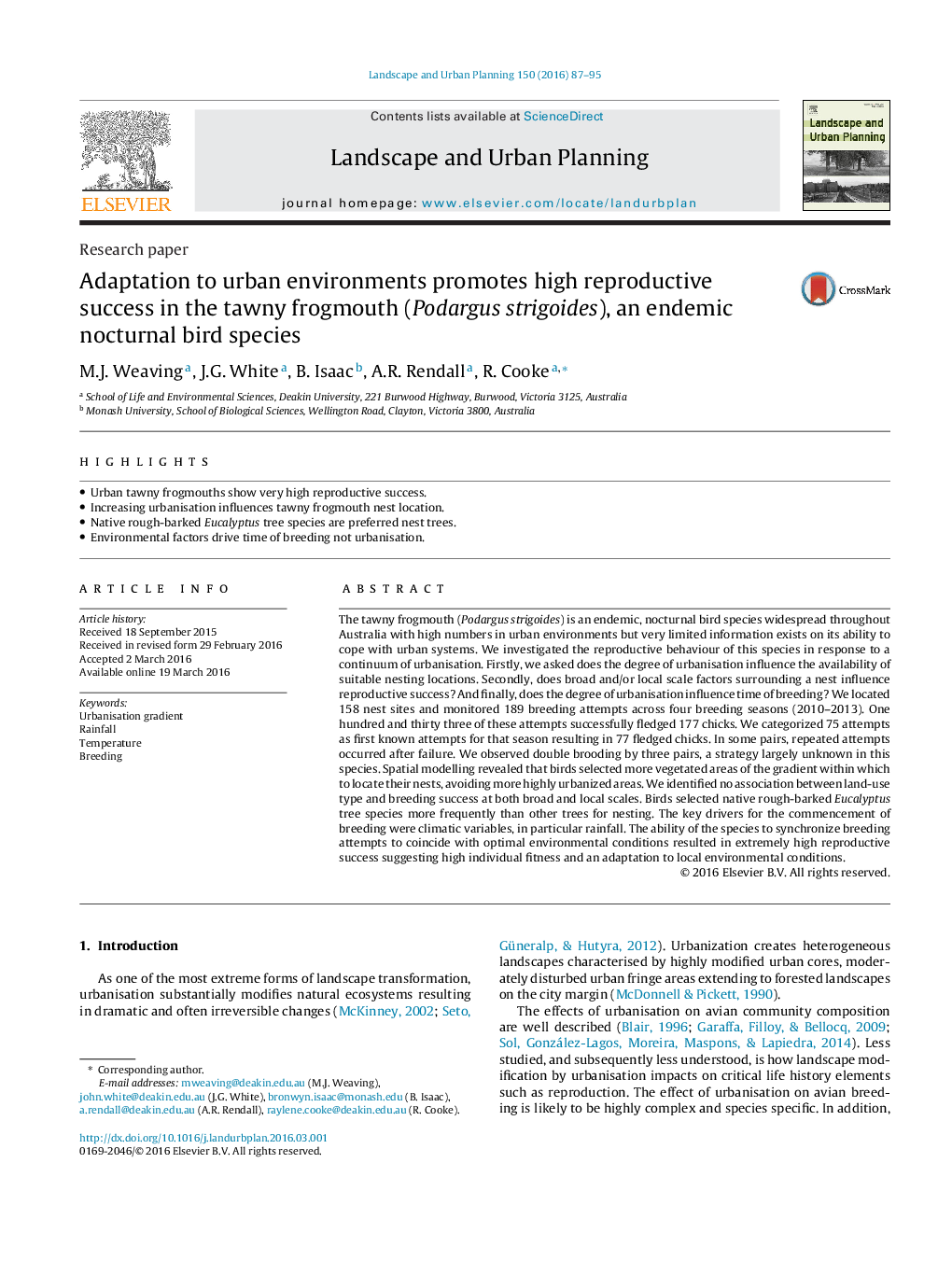| کد مقاله | کد نشریه | سال انتشار | مقاله انگلیسی | نسخه تمام متن |
|---|---|---|---|---|
| 1049108 | 1484608 | 2016 | 9 صفحه PDF | دانلود رایگان |
• Urban tawny frogmouths show very high reproductive success.
• Increasing urbanisation influences tawny frogmouth nest location.
• Native rough-barked Eucalyptus tree species are preferred nest trees.
• Environmental factors drive time of breeding not urbanisation.
The tawny frogmouth (Podargus strigoides) is an endemic, nocturnal bird species widespread throughout Australia with high numbers in urban environments but very limited information exists on its ability to cope with urban systems. We investigated the reproductive behaviour of this species in response to a continuum of urbanisation. Firstly, we asked does the degree of urbanisation influence the availability of suitable nesting locations. Secondly, does broad and/or local scale factors surrounding a nest influence reproductive success? And finally, does the degree of urbanisation influence time of breeding? We located 158 nest sites and monitored 189 breeding attempts across four breeding seasons (2010–2013). One hundred and thirty three of these attempts successfully fledged 177 chicks. We categorized 75 attempts as first known attempts for that season resulting in 77 fledged chicks. In some pairs, repeated attempts occurred after failure. We observed double brooding by three pairs, a strategy largely unknown in this species. Spatial modelling revealed that birds selected more vegetated areas of the gradient within which to locate their nests, avoiding more highly urbanized areas. We identified no association between land-use type and breeding success at both broad and local scales. Birds selected native rough-barked Eucalyptus tree species more frequently than other trees for nesting. The key drivers for the commencement of breeding were climatic variables, in particular rainfall. The ability of the species to synchronize breeding attempts to coincide with optimal environmental conditions resulted in extremely high reproductive success suggesting high individual fitness and an adaptation to local environmental conditions.
Journal: Landscape and Urban Planning - Volume 150, June 2016, Pages 87–95
